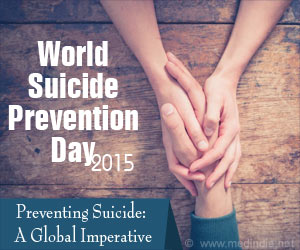Universal suicide risk screening in emergency departments nearly doubled the number of patients who were positively identified as thinking about suicide.

TOP INSIGHT
Universal suicide risk screening in emergency departments nearly doubled the number of patients who were positively identified as thinking about or having attempted suicide.
Nurses at the eight emergency departments that participated in the study were trained to administer a brief patient screener that focuses on three suicide risk factors: depressive symptoms, active suicidal ideation and lifetime suicide attempts. A positive screen is defined as any individual who either confirmed active suicidal ideation, or reported a suicide attempt within the six months prior to the ED visit.
"The patients we identified through screening received additional evaluation and intervention resources they otherwise would not have received," said Dr. Boudreaux, professor of emergency medicine, psychiatry and quantitative health sciences and vice chair of research for the Department of Emergency Medicine. "In fact, with screening we identified a subset of patients whose suicidality was serious enough to warrant psychiatric inpatient treatment. What would have happened to them if they had been discharged? The conventional wisdom is that at least some of those individuals would have tried to kill themselves."
The other 90% of patients with positive screens were discharged with resources, including lists of community-based services, a self-help safety plan and a wallet card with local suicide prevention lifeline numbers. Among patients with positive screens in the study’s final phase, those who agreed to participate following their ED discharge received a more intensive intervention via a series of structured telephone calls with trained nurses.
"At a minimum, patients received some resources that could help them on an outpatient basis, which they wouldn’t have received if we hadn’t detected risk," Boudreaux noted.
The ultimate goal is to spread what they learn beyond the ED.
Source-Newswise
 MEDINDIA
MEDINDIA




 Email
Email







